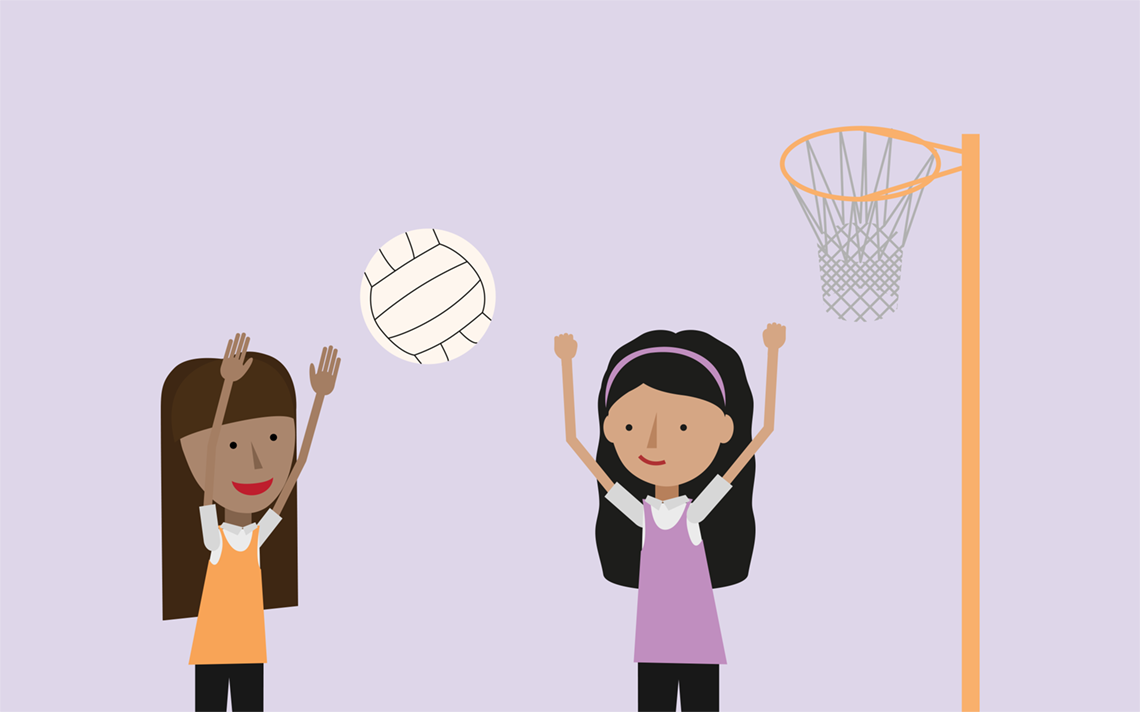What mathematical concepts are used in the game of netball?
With STEM jobs on the rise, it’s more important than ever to make sure girls see themselves in the future of mathematics. One way to do this? Through the game of netball.
Experts suggest that 80 per cent of our future jobs will require maths. So can we ignore the fact that women are significantly under represented in professions related to science, technology, engineering and mathematics?
Recent education research in New Zealand has revealed a significant difference in the way girls and boys engage with mathematics. According to a TIMSS report, more New Zealand Year 5 boys were very confident in mathematics, while more Year 5 girls were not confident in mathematics.
It’s our job as educators to find ways to encourage girls to pursue mathematics and foster a love for the subject. One way to do this is by connecting classroom maths with our learners’ real-world environments, showing them that maths is relevant to the everyday activities they value and love.
In New Zealand, sport is an important part of everyday ‘kiwi’ life, and netball is very popular with girls. So why not use the sport to spark their interest in the subject?
There are lots of mathematical concepts hidden in the game of netball. Here are some teaching ideas to use next time your learners are on the court.
Using netball to teach measurement
One of the distinguishing features of the game of netball is the three-feet-defence rule. This means that when a player is holding the ball, their opponents must be at least three feet away. The rule applies to the perimeter of the player so children need to be able to quickly estimate a distance of three feet while playing the game.
There would be lots of fun, practical activities you could create to estimate three feet.
Measurements that make up a netball court.
- The length and height of the court
- Size of the shooting circle
- Height of the netball hoop
- Perimeter and area of the court
The game of netball is played on court with two hoops at each end. The various measurements associated with the game of netball lend themselves to introducing concepts like area, perimeter, circumference and diameter. Go that step further and take the lesson outside onto the court and create a hands on, concrete experience for the students.
There is one other measurement that could be used to further develop your learners’ reasoning skills, and that’s the height of the netball players. The average height of a netball player is 182 cm. Using mathematics, can your learners make a case for the advantages of being tall in the game of netball? Encourage them to think about the height of the netball hoop, or the relationship between a players height and their reach when defending.
Using netball to teach time
An important rule when playing the game of netball is that a player can’t hold the ball for longer than three seconds. Players need to be able to quickly and accurately estimate three seconds or they risk being penalised. This is easier said than done on game day!
Transform Your Maths Assessment
Insights — our online assessment tool — gives you instant, powerful data to identify gaps and improve results.

Using netball to teach fractions
The netball court is divided into thirds. Many positions are restricted to certain areas on the court, for example, wing attack is only permitted to move around two thirds of the court. Learners need to have a conceptual understanding of fractions to be able to play the game.
Using netball to teach percentages
A common statistic recorded in netball is a player’s shooting percentage. This statistic reflects a player’s percentage of shots that are goals.
To calculate a player’s shooting percentage, divide the number of goals by the number of shots.
A higher shooting percentage reflects a player who is able to score a high number of goals per shot made. Learners might enjoy calculating different players’ shooting averages, through in-person games with their friends or by watching matches on television.
Calculating the shooting percentages presents lots of opportunities for discussion and further investigation. Ask questions like:
Does a shooting percentage accurately reflect how valuable a player is to the team?
Could a player have a high shooting percentage but have only taken a few shots?
How does that compare with the value of a player who might have a lower shooting percentage but have taken a lot more shots?
Learning to think critically is an important skill to develop in the primary years, and if learners are having fun and enjoying netball, all the better!
Using netball to teach operations
This may be an obvious one: the score! If the score isn’t tallied and added up accurately, it could be the difference between winning and losing the game. Being the score keeper is a hands-on way to practice addition.
Netball also provides opportunities for word problems.
Here’s an example word problem you can use with your learners,
Eight netball teams are competing in a regional tournament. During the tournament, the teams need to play each other once. How many games of netball will be played altogether?
In short, it is important we show children how the maths they learn in the classroom can be used in their everyday lives. Giving examples of mathematical experiences that are relevant to them can increase mathematical engagement and help them to understand the value of their learning.
References
Bennett, C. ‘A growing number of female students are making waves in STEM and the world is taking notice’, Miss FQ. (Accessed: 06 August, 2020)
Caygill, R. Singh, S. and Hanlar, V. (2014/15) Trends over 20 years in TIMSS: Findings from TIMSS.
(Accessed: 06 August, 2020)
‘Shooting Percentage Calculator’, captaincalculator.com (Accessed: 06 August, 2020)

